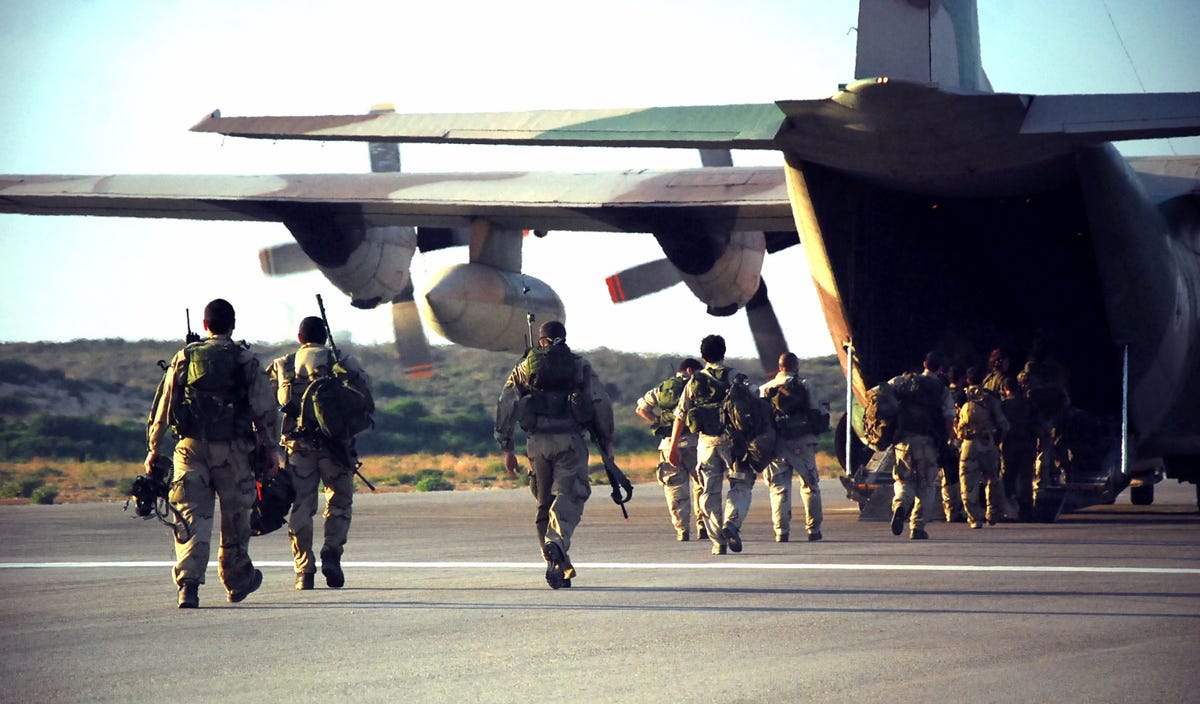Israel's newest war machines
The Israeli Defense Forces use the most advanced military technology to protect its 8 million citizens.

Small country, big guns
At just over 8,000 square miles in size, Israel is, geographically speaking, smaller than New Jersey. But the military has some serious firepower.
Here are all the details, courtesy of the Israeli Defense Forces.
INS Rahav submarine: No snorkel necessary
This new variation on the Dolphin 2 class of diesel-electric submarine has state-of-the-art Air-Independent Propulsion (AIP). AIP allows these submarines to remain silently submerged and undetected for up to 30 days at a time.
INS Rahav submarine: Nuke ready
The Rahav (which is the Hebrew name for Neptune, the Roman god of the sea) can hold up to 45 soldiers and launch cruise or nuclear missiles at targets several hundred miles away.
Unmanned ground vehicles
Israel recently deployed a fleet of semi-autonomous pickup trucks to patrol the Gaza border. The trucks conduct video surveillance and gather data 24 hours a day, in any weather conditions.Human operators can take control of the trucks, called Border Protectors, from a safe distance, away from snipers and missiles.
ThePartner: A humanoid robot
Four soldiers from Israel's air force and navy created this humanoid robot in their spare time. The robot has one functional arm with a hand that moves. Eventually, the military wants to use this robot to rescue injured soldiers in combat zones and even provide medical treatment to the wounded.
ThePartner: He mimics your movements
Connected to Wi-Fi and Bluetooth, this version of ThePartner robot is controlled by sensors attached to this glove.
iPads in the field
Instead of using paper maps and radio communication, the Israeli military has gone digital. Soldiers are armed with iPads, used for providing realtime intelligence on the locations of hidden mines and the movements of enemy soldiers spotted by surveillance equipment. These tablets also give soldiers the ability to control unmanned equipment remotely.
The EyeBall
The EyeBall helps soldiers assess the danger inside enclosed spaces. The device, just larger than a tennis ball, transmits 360-degree video as well as audio and infrared imaging to soldiers outside, allowing them to strategize attacks before entering dangerous places.
VIPER (Virtual, Intelligent, Portable Robot)
The remote-controlled VIPER can change its shape to traverse rocky terrain, fit into tiny spaces or even climb stairs. It has GPS as well as cameras and microphones. And it can be equipped with a grenade launcher or a miniature Uzi.
3D printers
When soldiers are training, sometimes there are things that are just too dangerous to bring into the classroom. Guns and 3D renderings of injured body parts are printed on demand to provide the most realistic training environments possible.
Skylark drone
This drone is lightweight, nearly silent and ready for flight in less than eight minutes. It has three hours of flight time, during which it transmits video, day or night, in any weather conditions.
Merkava tank: Missile defense shield
The Merkava tank has been a part of the Israeli arsenal since 1979, but the newest model, the Merkava Mark IV, is much more advanced. This model also has a missile defense system called Trophy, also known as ASPRO-A, which automatically neutralizes missiles headed toward the tank with a shotgun-like blast.
Smart helmets
These helmets not only act as goggles and oxygen masks, but also integrate projection technology showing altitude, radar signals and targeting data on a heads-up display.
The Iron Dome: A mobile defense system
The Iron Dome is probably Israel's most famous defense network. Most of the Iron Dome system is made up of a series of mobile ground-to-air long-range missile stations.
The Iron Dome: In action
This station is seen firing a missile to intercept a rocket over the city of Ashod on July 14, 2014.
The Iron Dome: Clear skies
Just a few days later, another rocket launched from the Gaza Strip was intercepted by the Iron Dome.
The Iron Dome: Partially funded by the United States
In August of 2014, then-President Barack Obama signed a bill sending $225 million to Israel to restock the Iron Dome after a tumultuous summer in the region.
David's Sling: Covers a lot of ground
David's Sling is a new addition to Israel's air defense system. This surface-to-air defensive missile system is stationary, unlike the mobile Iron Dome units, and can protect the entire country from air attacks from a permanent location. It was declared on active deployment in early April, 2017.
David's Sling: Maneuverable missiles
Unlike the blast warheads loaded on Iron Dome units, the missiles on David's Sling are two-stage, hit-to-kill maneuverable Stunner missiles that are designed to neutralize threats without any extra explosives.
Looking to visit the Sling yourself? Too bad. It's in an undisclosed location.
F-35 Lightning II Fighter Jet: A pricey plane
The newest fighter jet in the Israeli air force is Lockheed Martin's F-35 Lightning II Fighter Jet. The F-35 program is the most expensive weapons system in military history.
F-35 Lightning II Fighter Jet: Meeting the need for speed
With new stealth technology, avionics and a top speed of Mach 1.6, these planes will join active deployment with the Israeli Air Force in 2019.
F-35 Lightning II Fighter Jet: Touches down in Israel
This is the first of the 50 F-35 fighter jets that arrived in Israel at the end of 2016. The plane is equipped with very low-observable (VLO) technology, which means it can enter defended airspace undetected by radar. It's loaded with air-to-surface and air-to-air weapons. The F-35 also has advanced radar jamming technology to defend against enemy attacks from the air.
The C-130J 'Samson'
This transport plane can travel almost 2,500 miles in one trip carrying 94 paratroopers with all of their gear. It also makes midair refueling significantly easier; it can fly closer to smaller aircraft while supplying gasoline.